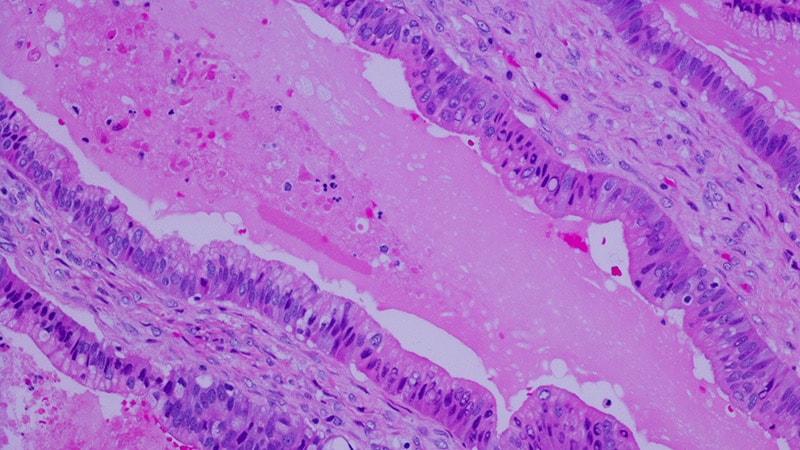Targeted Screening Improves Survival for High-Risk Pancreatic Cancer Patients
Core Concepts
Targeted surveillance of high-risk individuals can detect pancreatic cancer at an earlier, more treatable stage, leading to significantly improved survival outcomes compared to the general population.
Abstract
The study evaluated the effectiveness of targeted surveillance for pancreatic ductal adenocarcinoma (PDAC) in high-risk individuals. The researchers compared 26 high-risk individuals diagnosed with PDAC through the Cancer of the Pancreas Screening (CAPS) program to 1,504 matched control patients from the Surveillance, Epidemiology, and End Results (SEER) database.
Key findings:
- High-risk individuals were more likely to be diagnosed at an early stage (38.5% stage I vs 10.3% in controls) and had smaller tumors (median 2.5 cm vs 3.6 cm).
- Fewer high-risk individuals had distant metastases at diagnosis (26.9% vs 53.8% in controls).
- Median overall survival was significantly longer in high-risk individuals (61.7 months vs 8 months in controls).
- 5-year survival probability was much higher in the high-risk group (50% vs 9% in controls).
- High-risk individuals with screen-detected cancer had an even higher median survival of 144 months.
The study suggests that targeted surveillance of high-risk individuals, such as those with familial or genetic predispositions, can lead to earlier detection and improved clinical outcomes for pancreatic cancer patients.
Customize Summary
Rewrite with AI
Generate Citations
Translate Source
To Another Language
Generate MindMap
from source content
Visit Source
www.medscape.com
Targeted Pancreatic Cancer Screening May Save Lives
Stats
38.5% of high-risk individuals were diagnosed at stage I, compared to 10.3% in the control group.
30.8% of high-risk individuals were diagnosed at stage II, compared to 25.1% in the control group.
The median tumor size at diagnosis was 2.5 cm in high-risk individuals, compared to 3.6 cm in the control group.
26.9% of high-risk individuals had distant metastases at diagnosis, compared to 53.8% in the control group.
The median overall survival was 61.7 months in high-risk individuals, compared to 8 months in the control group.
The 5-year survival probability was 50% in the high-risk group, compared to 9% in the control group.
Quotes
"Surveillance of high-risk individuals led to detection of smaller pancreatic cancers, a greater number of patients with stage I disease, and a much higher likelihood of long-term survival than unscreened patients in the general population."
"These findings suggest that selective surveillance of individuals at high risk for pancreatic cancer may improve clinical outcomes."
Key Insights Distilled From
by Gargi Mukher... at www.medscape.com 07-16-2024
https://www.medscape.com/viewarticle/targeted-pancreatic-cancer-screening-may-save-lives-2024a1000d16
Deeper Inquiries
What are the specific criteria used to identify high-risk individuals for targeted pancreatic cancer screening, and how can these be improved or expanded?
In the context of targeted pancreatic cancer screening, high-risk individuals are typically identified based on familial or genetic predispositions that increase their likelihood of developing pancreatic ductal adenocarcinoma. Specific criteria may include a family history of pancreatic cancer, known genetic mutations like BRCA2 or CDKN2A, or certain hereditary syndromes such as Lynch syndrome or Peutz-Jeghers syndrome. To improve and expand these criteria, additional factors could be considered, such as personal history of chronic pancreatitis, diabetes, or smoking, which are known risk factors for pancreatic cancer. Incorporating advanced genetic testing to identify more specific mutations associated with pancreatic cancer risk could also enhance the accuracy of identifying high-risk individuals.
What are the potential drawbacks or limitations of targeted screening, such as false positives, overdiagnosis, or unnecessary interventions, and how can these be addressed?
Targeted screening for pancreatic cancer, while beneficial, can have drawbacks such as false positives, overdiagnosis, and unnecessary interventions. False positives can lead to unnecessary anxiety and follow-up procedures, while overdiagnosis may result in treating indolent or slow-growing tumors that may never cause harm. Unnecessary interventions can also pose risks to patients. These limitations can be addressed by refining screening protocols to reduce false positives, utilizing advanced imaging techniques to distinguish between indolent and aggressive tumors, and adopting a personalized medicine approach to tailor interventions based on the specific characteristics of the tumor. Additionally, educating both patients and healthcare providers about the potential risks and benefits of screening can help in making informed decisions.
How can the insights from this study on targeted pancreatic cancer screening be applied to improve early detection and treatment strategies for other types of cancer?
The insights from this study on targeted pancreatic cancer screening can be applied to enhance early detection and treatment strategies for other types of cancer by emphasizing the importance of risk stratification and personalized surveillance. By identifying high-risk individuals through genetic testing, family history assessment, or other risk factors, targeted screening programs can be developed for different types of cancer. Early detection of smaller tumors through regular surveillance, as demonstrated in the study, can lead to improved outcomes and increased survival rates. Furthermore, the concept of selective surveillance for high-risk individuals can be extrapolated to other cancers with known risk factors, enabling the implementation of tailored screening programs that focus on early detection and intervention for those at increased risk.
0
